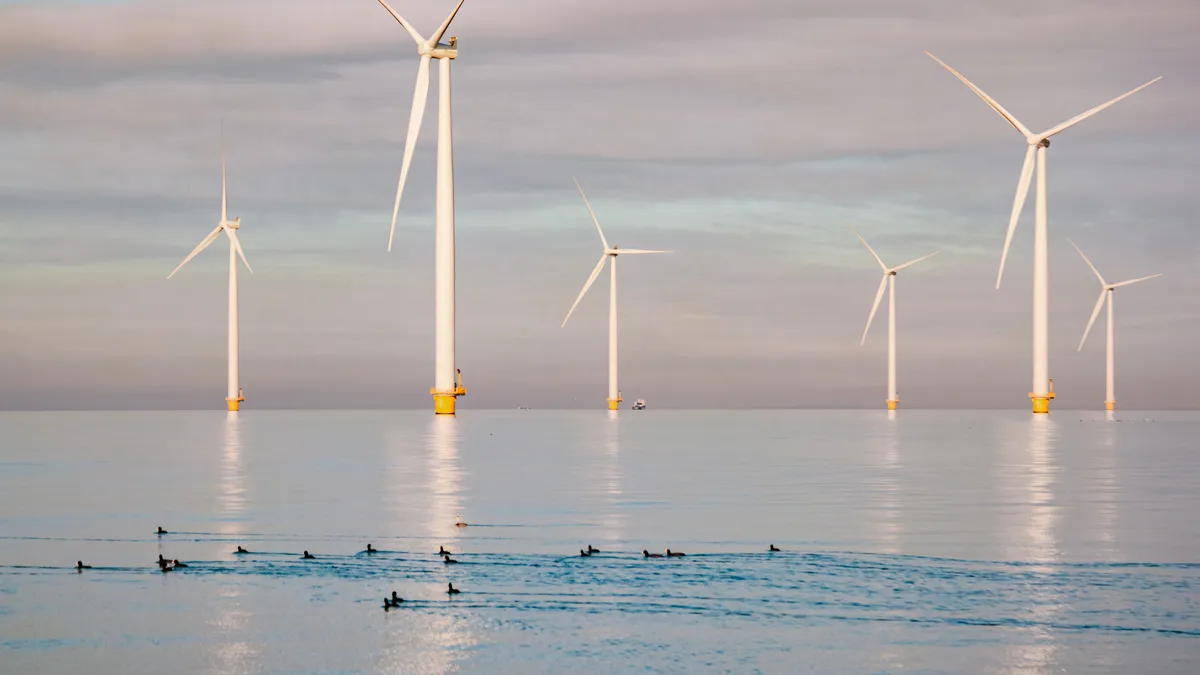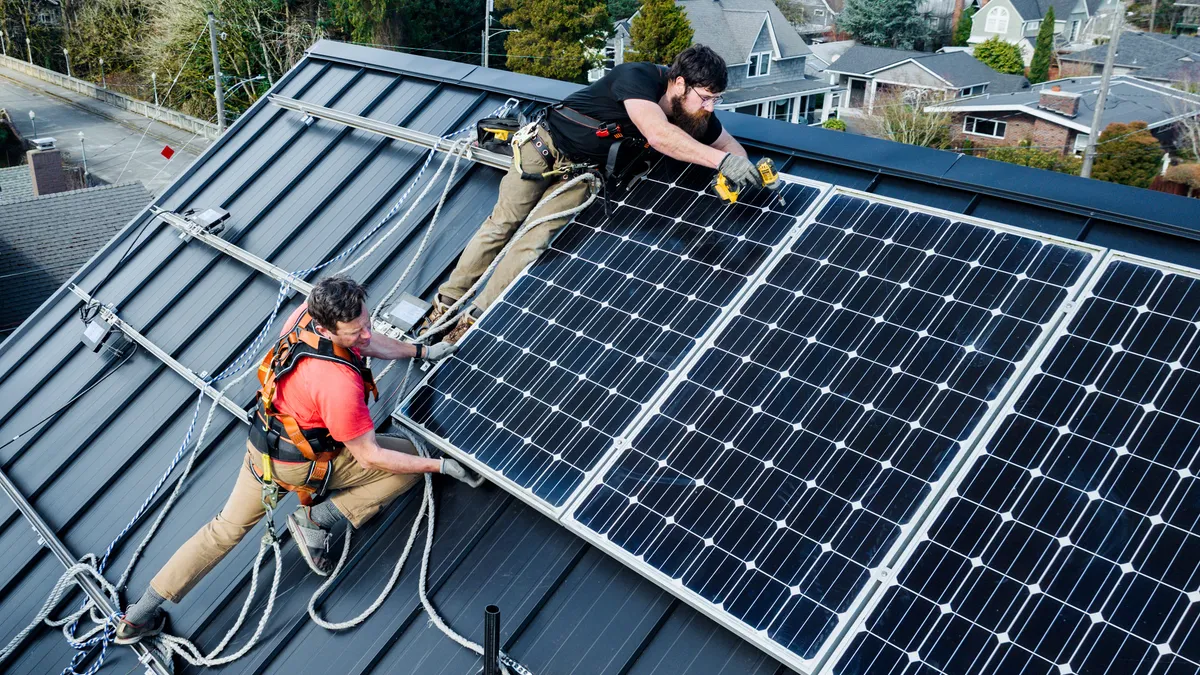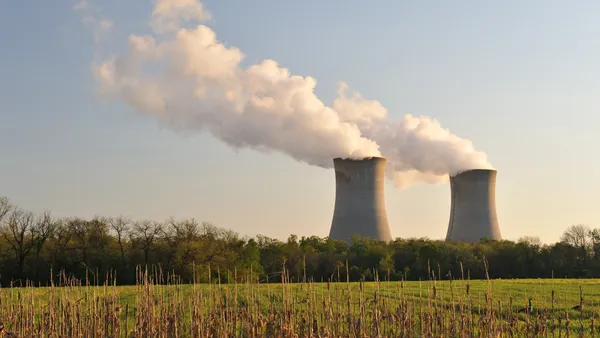Dive Brief:
- Arizona Public Service Co. and a group of solar interests filed a settlement on rate design and rooftop solar compensation with the Arizona Corporation Commission, following years of contentious debate.
- Under the agreement, new rooftop solar customers would be paid $0.129/kWh for excess energy exported to the grid. The export rate would decline 10% annually for new rooftop solar systems, but customers would lock in their rates for 10 years when they sign up.
- Solar energy consumed by end users themselves would be valued at about $0.105/kWh, but exact rates would vary by customer usage patterns and rate design. The offset rate would be lower for demand charge rate options, likely between $0.096 and $0.078/kWh.
- The agreement also includes rate design options for rooftop solar and non-rooftop solar customers, including time-of-use rates and residential demand charges. The agreement also establishes a 20-year grandfathering period for customers who file an interconnection application before a decision is issued in the rate case.
Dive Insight:
After five years of debate over rooftop solar compensation and rate design, Arizona Public Service and solar interests have filed a settlement that could provide policy stability for installers the utility's service area.
Under the new agreement, rooftop solar customers can choose from four rate design options that include a time-of-use rate plan with a grid access charge or a demand-based rate plan without a grid access charge. The settlement does not include a mandatory demand charge, as APS originally proposed.
The export rate for rooftop solar energy is set for this year at $0.129/kWh, and will step down 10% annually in years to come for new customers. Customers would receive the export rate of the year of their interconnection application for 10 years.
The export rate is different, however, from the offset rate — the rate solar customers will be credited on their utility bills for every kWh of self-generated solar they consume. The offset, according to the settlement, will be determined by the "load profile and production profile of APS customers with DG."
At the outset, the settlement estimates the offset rate would be about $0.105/kWh, but will depend on "individual usage patters and DG system size, orientation, and production."
For the demand-charge rate design, the solar energy consumed onsite will likely be valued between $0.096 and $0.078/kWh, according to APS.
Both the export and offset rates are below what rooftop solar customers are paid under retail rate net metering — between $0.13/kWh and $0.014/kWh in Arizona. Existing solar users would be able to keep their original retail rate compensation for 20 years.
If the settlement is approved by regulators, Arizona will join a growing number of states where utilities and solar advocates have reached deals to move away from retail rate net metering. Similar compromises were notably reached in New York and Colorado last year.
The deal is the product of half a decade of solar debates in Arizona. In 2015, after two years of contested regulatory proceedings, regulators opened a value of solar docket to settle the rooftop compensation issue.
At the end of 2016, regulators concluded that docket by deciding to end the retail rate net metering program in favor of new compensation models based on utilities' avoided cost rates for other generation. The final compensation rates, however, were to be determined in individual rate cases.
Earlier this year, the ACC approved a rate proposal from Tucson Electric Power, which offered time-of-use and residential demand charge options, as well as a modest increase in solar fees. The TEP decision, however, did not include a final ruling on rooftop solar compensation, setting up the APS rate case to provide a precedent for the state.
"It's been our position to get ahead [of rooftop solar issues] and try to create a sustainable solar path," said Greg Bernosky, director of regulation and compliance at APS. "It's intended as a bridge to other technologies. We didn’t solve for [just for] solar; we wanted to solve for things that are starting to happen."
The settlement doesn't stop at rate design and solar compensation. All parties involved pledged in a separate agreement to stand by the settlement if it is approved and refrain from undermining it through ballot initiatives or advocacy tactics at the ACC.
The settlement would also institute a self-build moratorium for APS, meaning the utility cannot attempt to build any new generation before 2022 unless given explicit approval by the ACC. The moratorium extends to the end of December 2027 for combined-cycle gas generation units, but exempts microgrids, renewables, distributed generation, power purchases and upgrades to existing facilities.
Solar advocates applauded the agreement, approved by 30 of 40 stakeholders in the docket. The Arizona Solar Energy Industries Association (AriSEIA) hopes the settlement will end "years of attacks on the rooftop solar industry in Arizona."
"The future of Arizona’s solar industry was very much on the line in this case and while this settlement doesn’t help Arizona solar grow, it allows solar to remain a viable option for some Arizonans,” Brandon Cheshire, president of the board of AriSEIA, said in a statement.
This post has been updated to clarify information about the solar export rate.





















